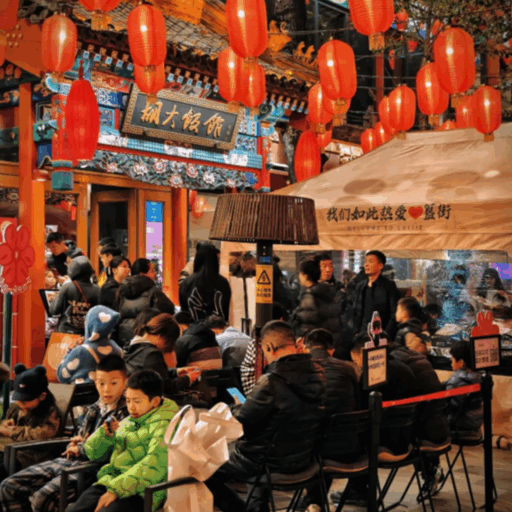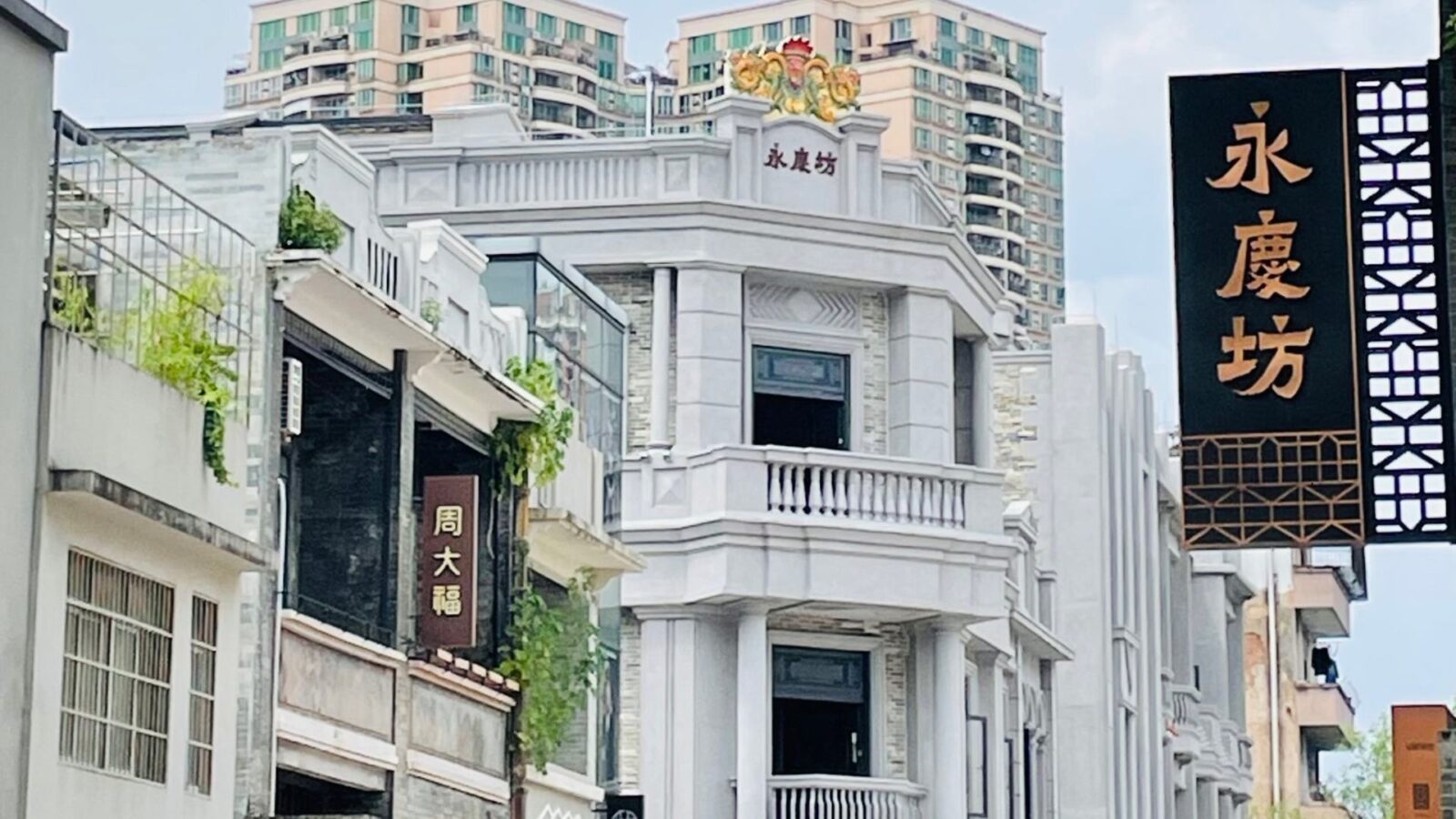Whether you're visiting for work or vacation, planning trips to Shanghai is the cherry on top, as the city seamlessly integrates technology, tourism, and ancient culture in a unique blend. The beauty of Shanghai is that it lets you explore so many different things right here in the city. This blog caters to individual preferences, allowing users to create blueprints for China tours from Shanghai that they can customize according to their preferences. Their vivid imaginations can center around walking the Great Wall of China, river boating on the Yangtze River, experiencing local culture, and many more things. Continue reading to find out how to use Shanghai as a medium to travel to the heart and soul of China.
What are the Best China Tour Packages from Shanghai in 2025?
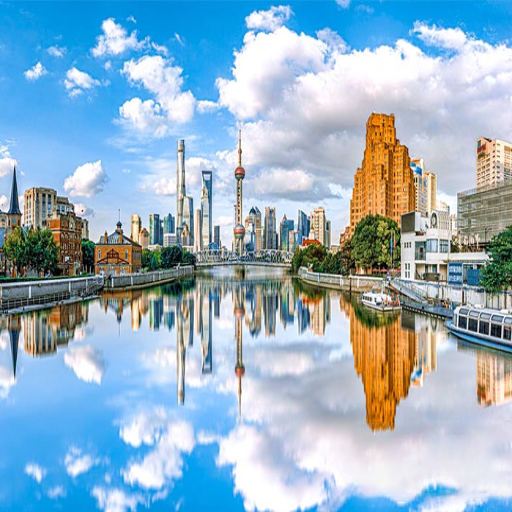
Customizable Private Tours in China Starting from Shanghai
1. Classic China Highlights Tour (10 Days)
This 10-day private tour is designed to cover almost every major highlight in China and starts in Shanghai. Tourists can enjoy the ultra-modern Shanghai skyline before heading to Beijing, where they explore the Great Wall of China and the magnificent Forbidden City. It also covers Xi’an, where tourists can get a glimpse of ancient history from the Terracotta Warriors. Finally, it ends in the city of Guilin, famous for its serene views, karst hills, and peaceful Li River cruises. This package offers an unmatched blend of urban development, natural beauty, and cultural heritage.
2. Shanghai to Yunnan Adventure (12 Days)
This 12-day tour is specially designed to capture the distinct beauty of Yunnan Province. After enjoying the beauty of Shanghai, tourists will explore some of the lesser-known yet equally vibrant parts of China. Starting with Kunming, “City of Eternal Spring,” and the splendid Stone Forest, moving to Dali’s picturesque old town and Erhai Lake, later on to Lijiang’s cobblestone streets and breathtaking views of Jade Dragon Snow Mountain. This adventure tour ends at Shangri-La, known for Tibetan culture and stunning views of the Highlands.
3. Yangtze River and Cultural Immersion Tour (14 Days)
The cruise on the Yangtze River integrates metropolitan delights and rural charm into a singular vacation. Starting in Shanghai, you’ll explore its historical and modern marvels: the Bund and the Yu Garden. Chengdu is next in line to visit China's landmark, the giant panda. Then it’s time to board your ship for a cruise on the Yangtze River, where you sail through mighty gorges and ancient river towns. The tour wraps up in Chongqing and Hong Kong, where traditional experiences complement the coastal beauty.
4. Silk Road Expedition from Shanghai (15 Days)
This 15-day trip is ideal for history buffs. It follows the steps of the famous Silk Road and begins in Shanghai, where you will uncover the city's colonial history. Heading further west, the highlights include Dunhuang's cave of a thousand Buddhas, Urumqi's Heavenly Lake, and the famous markets of Kashgar. This tour will introduce you to many cultures that have shaped the history of the place, which, when combined with China’s heritage, makes for an enlightening experience.
5. Family-Friendly Tour of China's Wonders (8 Days)
Shanghai offers a variety of entertaining choices, including visiting Disneyland or the Shanghai Science and Technology Museum, which are part of an 8-day tour that starts and ends in Shanghai. After the initial activities in Shanghai, the tour leads to Beijing, where you can also visit portions of the Great Wall of China and the Temple of Heaven. This tour also includes a trip to see the Terracotta Warriors in Xi’an, which comes with archaeological workshops, making it fun for people of any age.
All of these top-rated private tours from Shanghai in 2025 guarantee well-structured itineraries along with the freedom of customization, which makes each individual’s trip special and one of a kind. Start planning your Chinese venture today!
Comprehensive Tours of China from Shanghai and further to Beijing.
The Services offered, combining modern and historic marvels, all in one trip, make it appealing to travelers from around the globe. Tours from Beijing to Shanghai give you the chance to experience the juxtaposition of breathtaking modern city skylines alongside seamlessly integrated natural scenery. When traveling to Shanghai, you will notice priceless structures like the Oriental Pearl Tower and The Bund, which are testaments to the city's rich history.
As we move on to Beijing, it is known for its imperial history. Here, tourists get the opportunity to admire centuries-old architectural marvels such as the Forbidden City and the Great Wall of China. Tour packages are usually inclusive of other important cultural landmarks, such as the Temple of Heaven and the Summer Palace, both of which provide a deeper understanding of China's rich history.
Tourists have the opportunity to customize their Beijing trips by traveling to other cities, such as Suzhou, known for its beautiful gardens, and Hangzhou, famous for West Lake. Each tour is tailor-made to strike a balance between adventure and leisure activities, catering to the interests of all tourists. Comprehensive tours of China are unmatched as they provide relief for those interested in dishes, art, and breathtaking scenery.
Customized Tour Packages for Different Travel Experiences
Traveling to China is now easier than ever with specially designed tour packages that cater to different travel interests and needs. For those who enjoy history, there are specialized tours that feature world heritage sites, such as the Great Wall, the Forbidden City, and the Terracotta Army in Xi’an. Nature lovers may wish to experience the breathtaking landscapes of Zhangjiajie, Jiuzhaigou National Park, or Li River in Guilin. Food lovers will enjoy culinary tours that include market visits and authentic cooking classes in Sichuan, Cantonese, and Shaanxi, which are famous for their gastronomic delights.
For a more contemporary view, urbanists can explore the distinct cultures of China’s megacities, such as Shanghai, Beijing, or Shenzhen, which are characterized by their shopping malls, cutting-edge infrastructure, and leisure activities. More daring tourists can go trekking on the Silk Road, through the Gobi Desert’s dunes, or to Tibetan monasteries for a tranquil experience. These customized packages combine rich cultural experiences with modern comforts, thus ensuring unforgettable trips tailored to individual interests or group needs.
How to Plan the Perfect China Travel Itinerary from Shanghai?
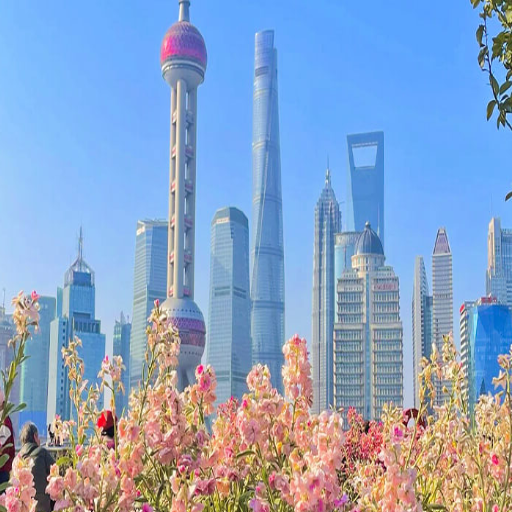
Key Cities for Your China Trip
Beijing, sitting at the heart of China, holds a special place in the hearts of every citizen for its rich imperial history and advancements. It boasts the Great Wall of China, the infamous Forbidden City, and Tiananmen Square, which are the most coveted landmarks in Beijing. Beijing is a richly diverse city in terms of culture, history, and cuisine. One of the many famous dishes is the Peking duck. An essential stop on any trip to China, Beijing can not be missed.
Xi’an: Starting as he starting point of the Silk Road, it is known to be the home for many dynasties. Xi'an is most famous for the Terracotta Army of Emperor Qin Shi Huang. Tourists love visiting this place due to the ancient culture and heritage, surrounded by vibrant city life and major tourist spots like the Big Wild Goose Pagoda and well-preserved ancient city walls.
Chengdu is known for being both the home of giant pandas and the heart of Sichuan cuisine. Not only is it home to famous sizzling, spicy dishes and original hot pots, but it also boasts a tranquil atmosphere. Nature lovers love Chengdu due to its scenic views of Mount Qingcheng and the Dujiangyan Irrigation system, which, combined with Chengdu's relaxed atmosphere, makes it perfect for food aficionados.
Hangzhou: Also known as the City of Heaven, Hangzhou is famous for the mesmerizing views of West Lake, lush tea plantations and ancient pagodas which captives every tourist. A walk around the lake or a trip to Lingyin Temple is perfect for those who want to escape into nature while still experiencing a blend of beauty and history.
Guilin and Yangshuo: These two cities are famous for their karst landscapes and are teeming with dramatic hills, deep green rivers, and peaceful countryside views. They are ideal for travelers seeking an active vacation filled with outdoor activities, such as bamboo rafting on the Li River or biking through the Yangshuo rice paddies.
Shanghai: This modern city of China has pearl-like shopping stores, vibrant nightlife, and a skyline that will leave anyone starstruck. From walking by the Bund to visiting the high-rises in Lujiazui, the city is a perfect blend of old and new. Be sure to visit Yu Garden and Shanghai Tower for a well-rounded experience.
Planning a trip to these destinations will allow travelers to experience the rich culture the country has to offer through its traditional and modern sites, stunning landscapes, and historical locations.
Visiting These Regions of China on a Trip: The Best Time
Significant differences can be found within China in terms of seasons, climate, and key characteristics of each region. Here’s a breakdown to help you plan out your trip better:
North China (Beijing, Xi’an, Harbin): Autumn and spring typically occur between April and May and September and October. This particular timeframe offers mild temperatures in addition to clear, unobstructed skies, which makes it perfect for sightseeing. If you want to experience the Harbin Ice Festival, winter is also a good time, though it can be extremely cold. Historic landmarks like the Great Wall are beautiful during the winter as well.
East China (Shanghai, Hangzhou, Suzhou): Autumn and Spring equally reign over the region due to the exceptionally blooming nature, accompanied by delightful weather. Months during the summer can be pretty hot and humid, but they do offer ideal conditions for exploring Shanghai’s vibrant skyline, along with its water towns.
South China (Guilin, Guangzhou, Yunnan): A consistent decrease in rainfall, along with comfortable temperatures, can be observed from July to December, making those months the best. Yunnan also showcases its diverse landscapes and ethnic cultures during the spring and autumn months.
West China (Tibet, Xinjiang, Sichuan): The region can be best described as warm from June to September, making summer the best season. This is also when the high-altitude areas are more accessible. Due to the intense cold, traveling around these regions during winter is quite challenging.
Central China (Chengdu, Zhangjiajie): Autumn is a standout season with its stunning scenery and brisk weather. Zhangjiajie and other regions may experience rain during summer. Winters are also comfortable, and Chengdu’s hotpot is a great way to soothe any traveler during winter.
To experience the most beautiful and diverse sights in China, planning your trip according to regional seasonal patterns is essential.
How Many Days to Allocate for Each Destination
The highlights of each particular region in China, along with your travel interests, will dictate the number of days spent in each destination. Check out this example list for more clarity:
Beijing (3-4 days): Plan to visit the Great Wall, Forbidden City, and Summer Palace. You may also want to add a day for cultural activities or exploring an ancient village.
Shanghai (2-3 days): Focus on the Bund, Oriental Pearl Tower, and other shopping areas like Nanjing Road. Spending a day touring the water towns of Zhujiajiao is also a must.
Xi’an (2-3 days): One day for the Terracota Warriors and another for the city’s landmarks. Add the City Wall, Muslim Quarter, and mix in some Mount Hua for good measure.
Guilin and Yangshuo (3-4 days): Spend two days in Guilin for a cruise on the Li River and a visit to the Reed Flute Cave. Spend the next two days in Yangshuo, cycling through the scenic karst landscape and immersing yourself in the local culture.
Tibet (5-7 days): The elevation, along with its cultural richness, requires staying longer. Allocate time in Lhasa for Potala Palace and Jokhang Temple, and take a trip to Yamdrok Lake or Everest base camp for an exceptional experience.
Chengdu (2-3 days): Explore the Giant Panda Research Base and the food scene of the city. Stay longer if planning to visit nearby Mount Emei or the Leshan Giant Buddha.
Zhangjiajie (3-4 days): Take two days to visit and explore the stunning Zhangjiajie National Forest Park. Spend extra days visiting other attractions like the Grand Canyon Glass Bridge and scenic Tianmen Mountain.
The above plans allow for a more relaxed pace for every location, making it better to appreciate China’s rich culture and breathtaking nature.
What are the Most Popular Small Group Tours from Shanghai?
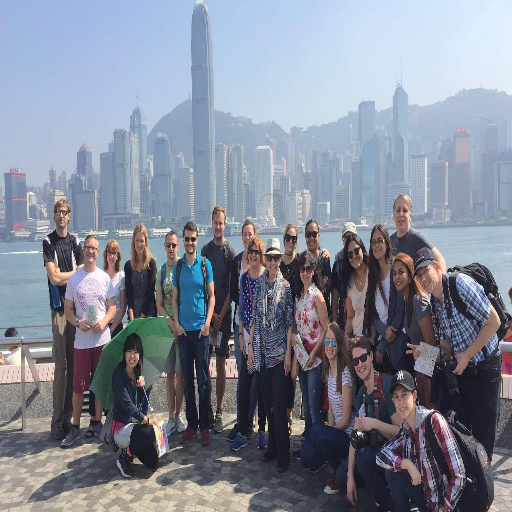
Shanghai to Xian: Explore the Terracotta Warriors and Ancient City
Traveling from Shanghai to Xi'an combines modern amusement with ancient history. Xi'an is famous for its blend of contemporary and historical sites. Xi'an is renowned for its blend of contemporary and historical sites. It is best known for its iconic Terracotta Warriors, which are stunning archaeological sites built alongside China’s first Emperor, Qin Shi Huang.
Anchor your exploration at the Terracotta Army Museum, where thousands of meticulously crafted clay soldiers, each standing as guardians, do not replicate each other. Beyond warriors, biking and strolling around Xian city provides an experience of the great ancient city wall of Xian, which is fantastically preserved and considered one of the wonders of the world.
The Muslim Quarter of Xi'an adds a new dimension, endowing the region with a Chinese identity, showcasing Islamic architecture, and adding spices to the already rich street food. Observation while eating is encouraged to ensure that while you eat bread, so-called roujiamo(burger) and biangbiang noodles, which are considered special local foods, you will also be regarded as a special local culinary. Cross-region high-speed trains are built between the two cities, enabling not only faster commutes but also more comfortable travel.
Chengdu: The Cultural Center of Sichuan and Panda Tourism
Chengdu, famous for being the home of the giant panda, offers visitors an unparalleled experience. It is renowned for its mix of remarkable scenic spots, cultural and historical sites, and scrumptious food. The Chengdu Research Base of Giant Panda Breeding enables thousands of tourists to see these beauties up close and personal while engaging in learning activities which are part of their conservation program.
Apart from the pandas, Chengdu is the center for hot Sichuan food, where people from around the world visit just for the mouth-watering mapo tofu, kung pao chicken, and the forever famous hot pot. Walking around the crowded Kuanzhai Alley or the historical Jinli Ancient Street gives one an insight into the local culture and the old style of Sichuan houses. Mount Qingcheng, a UNESCO World Heritage Site famous worldwide, is a perfect spot to visit while in Chengdu. It is one of the most beautiful places to see in China, showcasing some of the world’s best Taoist sites.
The best part of a Chengdu tour is the high-speed train connection from Shanghai. The 10-hour train trip is very comfortable compared to other modes of transport, making Chengdu the perfect place to enjoy a mix of nature, rich history, and delicious food.
A Guide to Yangtze River Cruises Starting From Shanghai
Exploring China's remarkable water systems is best achieved through a Yangtze River cruise, which combines stunning views with rich cultural and historical experiences. These cruises usually last for 3 to 7 days and start from cities like Chongqing, which is also a flight destination from Shanghai. The cruises allow travelers to take in the breathtaking nature of the Yangtze region.
While on the cruise, passengers can appreciate the natural wonder of the Three Gorges, which is surrounded by soaring cliffs and lush greenery. Other highlights include the renowned Three Gorges Dam, a marvel of engineering and a source of renewable energy. Most cruises also include other famous excursion spots, such as Fengdu Ghost City and Shibaozhai Pagoda, a stunning 12-story wooden building located on a hill.
Cruise ships are equipped with observation decks providing a breathtaking view of the river's calm waters and the stunning landscapes around. The riverboats also afford a luxurious experience with fine dining and entertainment facilities. If your preference is for relaxation or indulging in the adventures offered, a Yangtze River cruise, which departs from Shanghai, is the best way to experience China's beauty truly.
What Should You Know About Transportation on China Tours from Shanghai?
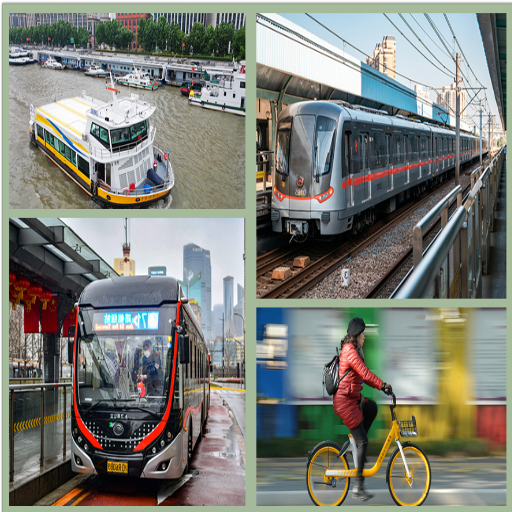
High-Speed Train Travel Between the Major Cities of China
China has the largest and most sophisticated high-speed rail network in the world, connecting major cities at unprecedented speed. Both tourists and locals find these trains dependable and comfortable because they travel at speeds of up to 350 km/h (217 mph). For instance, the distance of about 1,300 kilometers (807 miles) between Shanghai and Beijing can now be covered in under 4.5 hours, so intercity travel is highly convenient.
Like most trains, high-speed trains in China also offer modern conveniences, including Wi-Fi on select routes, dining cars, air conditioning, and spacious seating. Tourists can easily travel to various important places in China due to the train network's connectivity with China's major destinations, such as Guangzhou, Xi'an, Chengdu, and Shenzhen. Moreover, stations are conveniently located in the heart of the city, allowing easy access to public transportation and major sights. The focus on striving for promptness, environmental consideration, and advancements cements the train system as a quintessential trait of modern-day high-speed rail systems.
Train Travel vs. Domestic Flights In China
Both domestic flights and train travel in China have different benefits that cater to distinct needs. High-speed trains are especially punctual and affordable, like those on the extensive bullet train network. They are the most efficient method of transport for distances under 1,200 kilometers (almost 750 miles), as they take less time than driving to the airport, checking in, and going through security. Trains also have the advantage of providing expansive seating, scenic views of the countryside, and convenient access from cities to train stations.
In contrast, domestic flights within China tend to be beneficial for long trips, especially for distances longer than 1,500 kilometers (over 930 miles). Existing airline routes serve almost all major cities and even the most remote provinces, ensuring that travel times are quick. When every second counts, flying can prove advantageous as it takes much less time to get to a destination when compared to traveling by train. A flight’s convenience can be undermined, however, by factors such as weather, air traffic control delays, or other delays related to the airport.
In the end, a traveler’s preference for trains or flights comes down to the travel needs, which is why it is there: budget, duration, or overall experience. Both methods of transportation indicate that China is trying, within reason, to meet the varying demands of the travelers.
Getting Around Within Cities on Your China Tour
In retrospect, China’s cities have some of the best and most developed forms of urban transportation in the world, making it easy for tourists to travel. Subway systems in metropolitan areas such as Beijing, Guangzhou, and Shanghai operate on a large scale, are clean, efficient, and quite economical. For example, using subways is one of the best options to escape traffic jams, especially during peak hours. Furthermore, there are English and Chinese public address systems for many of the subways, which makes traveling easier for foreigners.
One way to travel around the city is the public bus services, which cover even the areas that don’t have subway stations. Buses, even though they are inexpensive, are capable of serving diverse populous regions as they help you explore the city reasonably. Taxis and ride-sharing apps like Didi Chuxing are other modes of transport that are often found only in urban areas and offer more flexibility. While the taxi’s meter determines the fare, it's best to pay with small bills or use local cashless payment services through mobile apps for a smoother experience.
In more recent years, cycling and electric bikes have become popular. With smartphones, exploring regions can become spontaneous through mobile applications that offer broad access to bike rentals. For longer distances, walking is always a perfect way to enjoy China’s local culture and the streets. While on your tour in China, these different means of transportation can effectively enhance your experience.
What Practical Information Do You Need for China Tours from Shanghai?
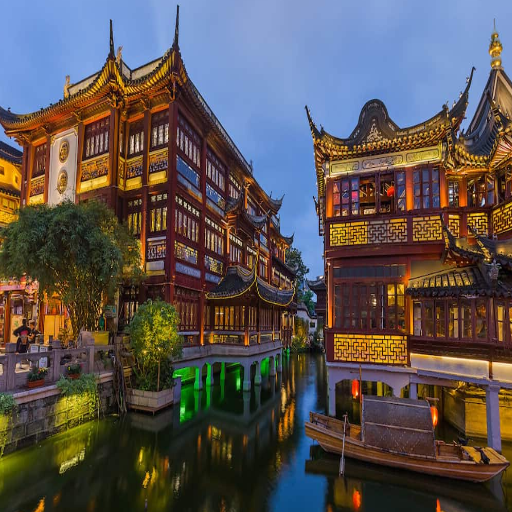
Apply for a Chinese Visa with the Correct Required Documents
For many international travelers to China, securing a visa is critical before entering the country. The most popular visa among foreign tourists is the Tourist Visa (L Visa). Sightseeing, cultural exploration, and visiting family or friends are among the permissible activities for an L Visa. To follow proper procedures, you are required to fill out the Chinese Visa Application Form, which is available online or in person at the nearest Chinese embassy or consulate to your residence. The application also requires students to submit a passport with a minimum of six months' validity and empty visa spaces, as well as a passport photograph.
Other supporting documents include a flight confirmation copy and proof of accommodation reservations. For those staying with family and friends for a few days, an invitation letter sufficiently serves the purpose. For group or organized tours, travel agencies often have everything a traveler requires. Ensure that application submission is done early, about the intended travel date. Since the volume of work at the embassy affects processing time, submit your work well ahead of the due date.
Some nationalities may qualify for visa waiver policies under certain conditions, such as stopover periods of 72 or 144 hours in major cities like Beijing or Shanghai, as long as they meet the requirements for the Transit Without Visa (TWOV) program. Furthermore, some areas, especially those in Special Economic Zones (SEZs) like Shenzhen, offer visas on arrival for tourists.
With these prerequisites in mind, you need to put in adequate planning, double-check the details, and stay informed about China’s visa policies for a smooth and effortless journey.
Money, Communication, and Travel Guide for China
Most travelers heading to China appreciate having information about the currency, language, etiquette, and customs relevant to their destination. The official currency of the People’s Republic of China is the Renminbi, also known as the Yuan (¥). It's a good idea to keep a small amount of cash handy, as some small merchants and stores may not accept online payments. That said, services such as Alipay and WeChat Pay are preferred over credit cards and cash, which makes transactions easier.
Contemporary Standard Mandarin is the official dialect taught in schools, but locally spoken languages like Cantonese are still widely used in Hong Kong and parts of Guangdong. Valuing a culture requires respect, which can be demonstrated by learning a few basic phrases in Mandarin, such as “nǐ hǎo” and “xiè xiè”. Mandarin isn’t as commonly spoken in rural areas, so having a translation app or phrasebook can work wonders. However, you will encounter it in tourist regions, major cities, and other focal points.
In social interactions, harmony and respect tend to blend. Go easy with body language, silence is meant to be appreciated, and local customs should be treated with utmost respect. In harmony with local culture, one waits for the host to start eating before consuming one's meal. While tipping is customary in most places, it is not expected in China, although it is slowly becoming accepted in high-end establishments.
A traveler can avoid misunderstandings and embrace the rich culture of Northeastern China when they are familiar with these tips.
Health and Travel Insurance Precautions for Tours in China
While planning tours in China, I focus on getting comprehensive travel insurance first. This will cover me for any sudden expenses that may arise, including medical care, trip cancellations, or losses such as misplacing personal items. Due to the nature of my trip, I ensure that my policy includes health coverage because medical treatment can be costly for foreigners who do not have insurance in place for China. The fact that I have such coverage in place helps me enjoy my trip, knowing I'm protected.
One of the most critical steps in dealing with China's health precautions is to stay informed about them well in advance of traveling. For instance, I try to find out whether any vaccinations are necessary for entry to China, such as Hepatitis A or Typhoid, depending on the specific regions I plan to visit. In addition, I ensure that I have a travel health kit containing essentials like hand sanitizer, over-the-counter medications, and any prescribed medicines. I locate the nearest health facilities and carry some essential information in case there is an emergency. These measures enable me to feel confident and prepared to deal with health concerns while traveling in China.
Frequently Asked Questions (FAQs)
Q: What are the pros of planning a private tour for my trip to China?
A: A private tour has many advantages, especially for your trip to China. A dedicated travel consultant and tour guide will be able to provide you with the utmost attention and tailor the pacing and itinerary according to your preferences. You can spend as much time as you want at the Great Wall or even the Forbidden City, as they will provide you with flexibility. Moreover, private transportation eliminates the need to wait for other travelers and allows for spontaneous travel stops, which increases convenience. Many tourists find private tours particularly valuable because having a guide who can speak fluent English enhances their understanding of cultural and historical sites, such as Shanghai and Beijing, which can be challenging to visit independently without knowledge of the local language.
Q: What does a typical travel guide of China offer to a first-time traveller?
A: For a first-time traveler, a China travel guide will usually include everything that pertains to transportation, like bullet trains to Beijing, accommodation, customs, and a bit of language. Guides for China often include essential features that tourists should visit, such as the Great Wall of China, the Forbidden City, the Terracotta Warriors in Xi’an, and the stunning karst landscapes in the southeast, like Guilin. Most guides cover topics such as currency, accessing the internet, visa requirements, and region-specific times of visit, from Eastern China to the Ancient Silk Road. Food recommendations, cultural insights, and shopping tips are provided to help you navigate the trip to China smoothly. Good guides strike a balance between covering popular destinations like Shanghai and Beijing, and lesser-known gems in places like Suzhou or Huangshan.
Q: What are the best tours that give you a broad perspective of China?
A: Tours revolving around China’s cultural diversity often integrate international hubs like Beijing and Shanghai with natural landmarks and cultural spots. The best-rated itineraries usually include the Great Wall, the Forbidden City, the Shanghai Tower, the Li River in Guilin, and the Terracotta Warriors in Xian. Nature lovers will appreciate tours that feature Zhangjiajie’s Avatar Mountains, West Lake in Hangzhou, or Huangshan (also known as Yellow Mountain). Cultural immersion tours may include specialized activities along the ancient Silk Road or in ethnic minority areas, such as Lijiang and Kunming. The best tours strike a balance between sightseeing at different landmarks and covering lesser-known locations. Well-organized tours come with knowledgeable guides, comfortable accommodation, and a balanced pace that isn’t too rushed.
Q: How do the Group Options compare to China Private Guided Tours?
A: Unlike group options, private guided tours in China provide a distinctly different experience. If you opt for a private tour, you will enjoy exclusive access to the guide and the ability to tailor your itinerary with the option to change plans mid-trip. Whereas groups have fixed schedules, private tours can be started at your preferred time, and you can spend as much time as you want in places like the Forbidden City or the Mutianyu Great Wall. In comparison to coaches, private vehicles offer better comfort, and the guide's explanations can be tailored to your interests. Although private tours are costlier than small group tours in China, travelers from Shanghai to Guilin or those traversing the Silk Road often find the experience, personalization, flexibility, and efficiency to be well worth the price.
Q: What should I know about small group tours in China from Shanghai?
A: China small group tours from Shanghai usually have 8 to 16 participants per group, which is more personal than big bus tours but cheaper than private tours. These excursions often feature major hotspots, such as Suzhou and Hangzhou’s West Lake, as well as bullet train rides to Beijing or Xi’an. When booking, pay attention to the maximum group size and try to choose a smaller group, as they often have better access to guides and are more likely to be genuine and not staged. Most reputable small group tours include quality accommodations, entrance fees, a few meals, and guides who speak English. These tours are perfect for independent travelers or couples looking for some organization without the costs that come with a private tour. Extensions to places like Guilin, Yangtze cruise possibilities, or themed trips focused on food or traditional arts are also offered by many operators.
Q: How does a Shanghai tour compare to other cities in China?
A: When talking about China, other cities may be well-known for their history, but a Shanghai tour stands out with its unique combination of modern-day exceptionalism and historical allure. Shanghai's Tower sparks otherworldly imagination, just like the Bund’s colonial-style waterfront is an enthralling example of a post-modern architectural gem. Thus, like any ultra-modern city, Shanghai hosts Yu Garden and Tianzifang, which represent traditional remnants of the city’s past. Additionally, Shanghai is located next to ancient cities like Suzhou and Hangzhou's West Lake, making them easy to access. Visitors in Shanghai can also make the most of the city, with world-renowned shopping locations and museums, as well as dine at Michelin-starred or street food restaurants. Shanghai is a dream come true for international travelers who are tired of the restrictions in other regions of mainland China; the abundant transportation services and English-speaking locals make navigating around a breeze.
Q: What can I expect when visiting Guilin during a tour in China?
A: Expect to be blown away by some of the world’s most stunning karst landscapes during your visit to Guilin on a China tour. For many, the highlight is cruising the Li River between Guilin and Yangshuo, where you will see the breathtaking scenery depicted on the 20 yuan banknote. Your tour will most likely cover climbing Elephant Trunk Hill, exploring the Reed Flute Cave with its awe-inspiring rock formations, and experiencing village life in the idyllic surrounding towns. Most quality tours offer activities like bamboo rafting, cycling through terraced rice fields, and learning traditional crafts. Courses of fresh air, away from the concrete jungles of cities like Beijing and Shanghai, are a big plus. Guilin is also renowned for its unique cuisine, which includes stir-fried river snails and rice noodles.
Q: Where do I go to arrange a custom-made experience for my vacation to China?
A: Get in touch with a travel consultant or an agency that specializes in tours in China. It is, however, advisable to have an initial plan based on your interests. Do you want a historical view of the Great Wall, the Natural beauty of Guilin, or a Cultural tourist adventure along the Silk Road? Specialists will book a consultation to discuss your preferences, including travel dates, budget, and accommodation standards. Initial itineraries need to be forwarded, which travel specialists need to adjust and refine based on the review and given feedback. Look for companies that are highly recommended and have positive reviews, as well as local guides available in every destination. Outstanding custom tour offers will provide around-the-clock support while in China and be flexible enough to make minor adjustments along the way. Don't forget that custom means more compared to those that are pre-packaged, and for good reason. Custom-made tours allow for a more tailored and personalized experience.
Q: What highlights should I include when planning to discover the best of China?
A: In your attempt to check out the best China has to offer, be sure to balance important landmarks with other experiences spread across the multi-faceted regions of China. Some must-include highlights are Beijing’s Forbidden City and Mutianyu Great Wall, the blend of colonial architecture on the Bund and Shanghai’s futuristic Pudong skyline, and Xi'an’s Terracotta Warriors. From all natural wonders, put a priority on accessing the Li River landscape in Guilin, Zhangjiajie’s Avatar Mountains, and maybe Huangshan (Yellow Mountain). Cultural highlights should include historical water towns like Suzhou, a Yangtze cruise through the Three Gorges, and some parts of the ancient Silk Road, if time allows. To make your trip more comprehensive, allow time to travel to some more ethnically diverse towns, like Lijiang or Kunming, in southern China. These places offer a stunning glimpse into minority cultures. Beyond achieving the best travel experience in China, make time to engage with communities, enjoy local cooking classes, or tea ceremonies, as this transforms a typical journey into an unforgettable experience.

